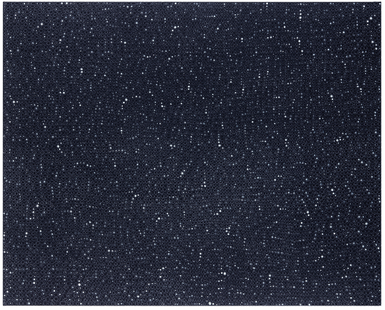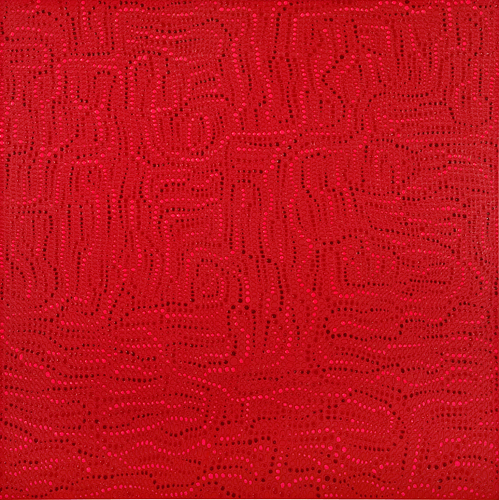 Untitled #651
Untitled #651 How does an artist deal with this in an age where so much art is seen online? Gonzalez just does his work and doesn’t worry about it.
“That is the nature of the work. I could always have done a type of work that looked great in photographs, but ultimately what is important is that you are true to yourself so that your work ends up in the hands of someone who will appreciate it, which pretty much means someone who will not rule it out based on an image of it,” he says. “So, yes, making shows is very important to me, but they are very important to every other visual artist because all of us need our work to be seen in person to really be appreciated.”
Gonzalez is correct that any art needs to be seen in person to be truly appreciated. But, nonetheless, art enthusiasts and collectors should make sure to see his work in person. The depth of his work and its appeal truly need to be seen in person. You can get an idea and feel via photos and the artist’s description but be sure to see these pieces. He uses canvas on board for his latest pieces—which are informed in part by his background in drawing.
“I use acrylic paint because it dries quickly. My work has a lot to do with drawing, and acrylic paint feels as immediate as a pencil to me. The canvas over board arrangement started because I was placing thousands and thousands of drops of diluted acrylic enamel on my paintings,” he says. “And I needed a surface that I could set horizontally and would not bow down so that those drops would dry without running into each other. A board under the canvas seemed to be the way to go.”
“I think of a my work as a vehicle to communicate something that can only be expressed with images --in the same way that writing uses words or music uses sound. Therefore, the message in my paintings can't be put into words,” Gonzalez says. “But it can be understood and felt. What I want people to understand o feel when they see them is the same as I do. I hope that my work is intriguing to viewers and that it somehow compels them to look at it again.”
Gonzalez’ earlier work was, in some respects, self-referential. These days he moves beyond himself in what he creates.
“I started doing this work to get away from what I was doing before. I needed to put some distance between my work and myself, and I wanted to do a type of work that wasn't a reflection of me, my ideas, likes or dislikes. Looking for ways to avoid those issues, I started to work with geometry and later with naturally occurring events,” he says. “I appreciated very much how impersonal both could be, how they could emphasize reason rather emotion and yet make an impact at a human level. A little while later they fused into the drop work and the rest has been its evolution. With respect to my influences, first and foremost is my teacher in Spain, Jordi Teixidor, who taught me to understand what I was doing. Among the --let's call them-- classic artists, I was very impressed by Ad Reinhardt. I loved his endurance and tenacity to take things wherever they had to be.”
This year Gonzalez is bringing pieces from his last series—images with a lot of contrast between background and foreground. He is one of a number of artists being shown by Brian Gross Fine Art.

 RSS Feed
RSS Feed